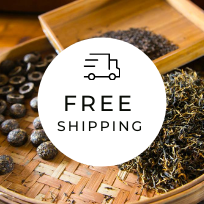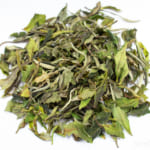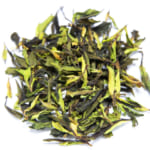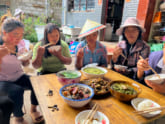- HOME >
- Tea Column
Regular Consumption of Umami Seasoning Can Influence Taste Preferences
- [2023.10.05] Posted By Akira Hojo
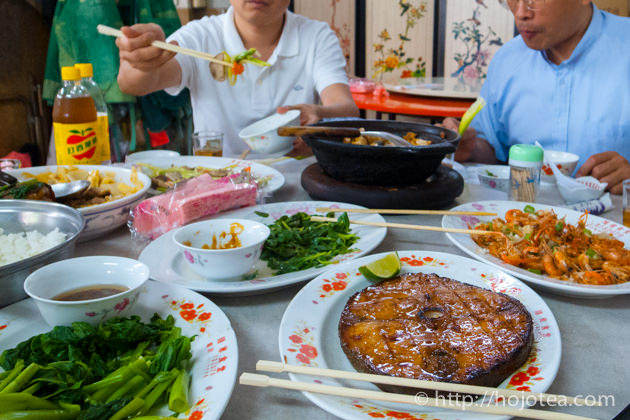
Excessive consumption of artificial condiments, such as umami seasonings, is believed to influence one’s taste and preferences. I’d like to share my own view to explore how an overabundance of condiments can indeed influence one’s palate.
Umami Seasonings Are Prevalent in Asian Countries
I spend half of the year living abroad, particularly in China and Southeast Asia, with a focus on countries like Malaysia, Singapore, and Taiwan. When dining out in these regions, I can’t help but observe a much more frequent and liberal use of monosodium glutamate (commonly known as MSG and produced by Ajinomoto Co., Inc.) compared to Japan. For example, during my stay in Kuala Lumpur, the capital of Malaysia, I noticed that MSG was frequently used as a seasoning in numerous eateries across the city. It was quite a noticeable trend in the local culinary scene.
The distinction between natural broths and artificial umami seasonings
Both chicken broth and Japanese kombu dashi contain umami components. However, it’s important to note that the umami component present in these natural broths primarily consists of glutamic acid, while artificial umami is associated with the chemical seasoning known as monosodium glutamate (MSG).
On the other hand, amino acid and nucleotide seasonings, widely distributed worldwide, undergo a synthesis process involving sodium attachment, leading to the formation of salts. This transformation into salts imparts their distinctive umami taste but can also introduce an unnatural sensation, which may differ from the experience of natural broths.
The Unique Flavor Profile of Monosodium Glutamate (MSG)
Monosodium glutamate (MSG) is commonly associated with its umami taste, but it offers a range of distinctive taste characteristics that go beyond umami.
MSG contributes to a pronounced fullness and richness in taste, creating a distinctive sensation on the palate, in addition to enhancing the umami effect.
The elevated sense of fullness and richness can be attributed to the presence of sodium. Alkaline minerals like calcium, potassium, and sodium play a role in enhancing the body of the taste.
When discussing glutamic acid in natural broths, it’s important to note that, due to its absence of sodium, it contributes to umami without the overwhelming richness found in MSG, resulting in a comparatively more refreshing and clean taste.
The Influence of Excessive Monosodium Glutamate (MSG) Consumption on Flavor Perception
The use of monosodium glutamate (MSG) in cooking significantly amplifies the body of the taste, making it richer, and simultaneously, the added umami makes many people find it delicious. MSG not only bolsters the body of the taste, imparting a greater sense of indulgence, but it also introduces an additional umami element that numerous people find particularly enjoyable.
While some individuals, like myself, may not have a preference for the distinct artificial umami taste and the excessive richness often associated with umami seasonings, it’s essential to acknowledge that MSG remains a popular choice for many. Consequently, many restaurants actively incorporate MSG into their dishes. This trend is especially noticeable in various Southeast Asian countries, Taiwan and big cities in China, where it’s commonly believed that the generous use of MSG can contribute to improved sales and customer satisfaction.
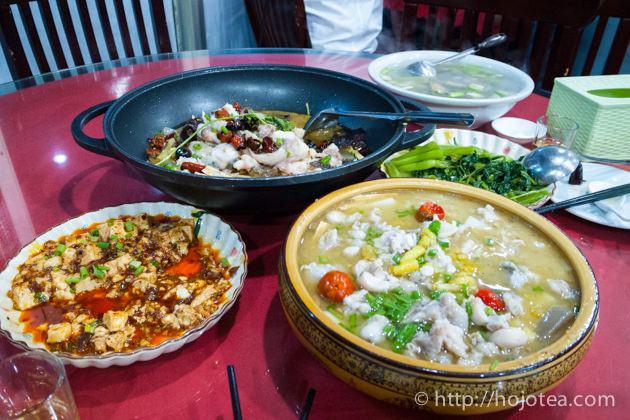
The Impact of Monosodium Glutamate (MSG) on Taste Preferences
The widespread use of monosodium glutamate (MSG) has led to a significant shift in taste preferences, with many individuals now favouring a robust body (rich taste) in their food. Interestingly, this preference for body is sometimes mistakenly equated with flavor intensity. This phenomenon is particularly pronounced in South East Asia, where even in the realm of tea, a substantial number of customers consistently seek out a strong body. Some customers have noted that, even in naturally cultivated teas with a pronounced aftertaste, the absence of a strong body can lead to a perception of weak flavor. They often describe the taste as “light” or not strong enough.
Personally, when it comes to selecting tea, I prioritize the depth of its aftertaste as an indicator of its quality. I used to pay less attention to the strength of the body, until about a decade ago. Consequently, during that period, HOJO’s selection included relatively few teas with a strong body, which occasionally led to feedback from customers about the teas tasting weak. Based on these experiences, in recent years, I’ve made a conscious effort to offer roughly half of our tea lineup with a strong and rich body, while the remaining options feature a lighter body for those seeking a more refreshing taste. However, regardless of body strength, the enduring aftertaste of tea remains a fundamental criterion guiding our sourcing decisions.
In Regions with Minimal MSG Usage, the Focus Shifts to Aftertaste
In the remote mountainous regions of Yunnan Province and Chaozhou, which I visit annually, the use of monosodium glutamate (MSG) is less prevalent compared to other areas. Particularly in the remote mountains of Yunnan Province, MSG is not commonly used, and locals tend to prepare broth by simmering ingredients like chicken bones to extract flavor. Additionally, in Japan, many traditional dishes emphasize the purity of ingredients, as seen in sashimi, sushi and tempura, which means that unless one frequently dines out, the intake of MSG remains relatively low compared to Southeast Asia.
In regions where MSG consumption is limited, people prioritize the depth of the aftertaste, and there is less demand for a strong body in their culinary experiences.
Especially when delving into the remote mountains of Yunnan Province, a notable trend emerges among tea producers—an unwavering focus on the depth of a tea’s aftertaste. In these regions, teas crafted from ancient tea trees grown naturally, renowned for yielding a more profound aftertaste, command higher prices. This pricing structure arises from the strong demand for teas with such flavorful characteristics. This relationship fosters a healthy dynamic wherein the depth of the aftertaste, which serves as a reflection of the tea materials’ quality, is directly translated into its market value and pricing.
A similar pattern can be observed in the world of Fenghuang Dancong Oolong tea, particularly in Chaozhou. To put it simply, in regions where culinary traditions typically exclude umami seasonings, individuals tend to associate the depth of the aftertaste with flavor intensity. On the flip side, in regions where umami seasonings are commonly used, there’s a belief that a tea’s body (its strength) is directly related to its flavor intensity. This difference in preferences highlights the interesting connection between regional cooking customs and how people interpret the taste of tea.
Related Articles
How to get the latest update on HOJO Tea?
1. Follow Twitter, 2. Click "Like" on Facebook, and 3. Subscribe in newsletter. You can have the latest tea news from HOJO Tea.
 Subscribe the Newsletter to enjoy the privileges
Subscribe the Newsletter to enjoy the privileges- You may receive a free sample upon purchase, or you may have the priority to purchase special products. So please remember to subscribe our newsletter as well as the social network.
- Yunnan Chun Jian Green Tea from High Mountain Gardens
- Yunnan Chun Jian Green Tea is now available.This tea is made from naturally grown leaves harvested from high mountain gardens at 2100m above sea level. It has a rich, long-lasting lingering aftertaste, comparable to raw Pu-erh tea. Yunnan as a Distinctive Tea Growing Region Over the past 20 years, we have explored a wide range …
- Limited Loose Leaf Release of 2025 Da Xue Shan Wild Raw Pu-erh Tea
- We have released the 2025 loose-leaf version of Da Xue Shan Wild Raw Pu-erh Tea.This tea comes from wild tea trees that grow naturally in the high mountains of Yunnan Province, at elevations above 2000 meters. This year, we were only able to secure a small quantity for retail, and the current release is available …
NEW ARTICLES
 Yunnan Chun Jian Green Tea from High Mountain Gardens
Yunnan Chun Jian Green Tea from High Mountain Gardens- Yunnan Chun Jian Green Tea is now available.This tea is made from naturally grown leaves harvested from high mountain gardens at 2100m above sea level. It has a rich, long-lasting lingering aftertaste, comparable to raw Pu-erh tea. Yunnan as a Distinctive Tea Growing Region Over the past 20 years, we have explored a wide range …
 Limited Loose Leaf Release of 2025 Da Xue Shan Wild Raw Pu-erh Tea
Limited Loose Leaf Release of 2025 Da Xue Shan Wild Raw Pu-erh Tea- We have released the 2025 loose-leaf version of Da Xue Shan Wild Raw Pu-erh Tea.This tea comes from wild tea trees that grow naturally in the high mountains of Yunnan Province, at elevations above 2000 meters. This year, we were only able to secure a small quantity for retail, and the current release is available …
 2025 Da Xue Shan Wild White Tea Now Available from Yunnan
2025 Da Xue Shan Wild White Tea Now Available from Yunnan- The 2025 harvest of Da Xue Shan Wild White Tea is now available. Crafted from truly wild Camellia taliensis trees growing naturally in the high-altitude forests of Yunnan, this tea offers a purity and character unique to its origin. This year’s unusually dry climate during the withering season was ideal, resulting in a floral and …
 Why Do Some Teas Taste Astringent? Exploring the Causes and Mechanisms of Astringency
Why Do Some Teas Taste Astringent? Exploring the Causes and Mechanisms of Astringency- Tea can range from having no noticeable astringency to possessing a very strong one. What causes this astringency? This article explores the causes and mechanisms behind astringency in tea. Causes of Astringency Astringency arises from the binding of tea components to proteins in the oral cavity, creating a sensation of tightness or dryness. The tongue …
 The Impact of Heat Sources on Tea Flavor
The Impact of Heat Sources on Tea Flavor- It is widely recognized that the material of a kettle plays an important role in shaping the taste of water for brewing tea. Yet, an often overlooked but equally significant factor is the type of heat source used to boil the water. Different heat sources, whether gas, electric, charcoal, or wood fire, can impart distinct …
 New Release of High Mountain White Tea
New Release of High Mountain White Tea- We are pleased to introduce our High Mountain White Tea, sourced from a unique tea garden with two key features: 1. Located at an altitude of 2200-2300m2. Completely wild and untended The ideal natural conditions of this garden result in tea of exceptional quality, offering a pure and gentle, nourishing taste. High Altitude and Wild …
 New Release of Da Xue Shan Wild White Tea 2024
New Release of Da Xue Shan Wild White Tea 2024- We have released the 2024 Da Xue Shan Wild White Tea Loose Leaf. This tea was produced under our direct supervision during our stay in Yunnan Province, ensuring meticulous production management on site. Definition of Wild Tea in Yunnan Province People in Yunnan strongly associate Camellia taliensis with wild tea, regardless of where it is …
 New Release of Wild Pu-erh Jasmine Pearl
New Release of Wild Pu-erh Jasmine Pearl- Out of curiosity, we decided to create a jasmine tea based on Da Xue Shan Wild Raw Tea. This resulted in an exceptionally rare tea, not only in Japan but also in China. Custom Production Network for Jasmine Tea At our store, we source various types of base teas from different regions during the spring. …
 2024 Overview: Our Yunnan White Tea Quality, Process, and Weather Insights
2024 Overview: Our Yunnan White Tea Quality, Process, and Weather Insights- One of the teas we’ve been focusing on in Yunnan Province is white tea. Historically white tea has been produced in both Fujian Province and Yunnan Province for a long time. While white tea from Fujian Province is well-managed during processing, we are dissatisfied with the quality of the raw materials due to the use …
 Yunnan’s Hospitality Culture: Expressed Through Meals
Yunnan’s Hospitality Culture: Expressed Through Meals- In China, as a form of greeting, it’s common to say “你吃饭了吗?” which means “Have you eaten?” However, in Yunnan Province, the phrase “吃饭” is often used in various situations, more like “Eat, eat,” serving as an invitation to share a meal. Yet, with prolonged exposure to Yunnan, one comes to understand that these meal …
Shop Info

Address:Lot No. T-215, 3rd Floor, The Gardens Mall, Mid Valley City, Lingkaran Syed Putra, 59200 Kuala Lumpur
Tel: +603-2287-4537
Business Hour: 10am to 10pm
Category
- New Arrival at HOJO Online Shop
- Featured Articles
- Newsletter
- Types of Tea
- Origin of Tea
- Teapot and Tea Equipment
-
Tea Column
- How to enjoy tea
- Tea Processing
- How to choose quality tea
- Tea constituents and functional effect
- Safety of Tea
- Foods
- Tea Business Operation
- Hobby and Outdoor Activity
- Ranking of Tea
- Video
- FAQ
- Media Release
Profile

- AKIRA HOJO
- I invite you to experience my tea selections.I was born in Nagano, Japan. In university, I studied agricultural chemistry, and I have the master degree in food science. I worked in Japanese food industry for 10 years. I involved in R&D, QC and QA. As a factory manager, I implemented ISO9000 series and managed the factory.
- The Art of Tea Magazine
- We posted the article on “The Art of Tea Magazine No.9, the magazine is published in Taiwan. We featured some scientific view about the tetsubin
- New Straits Times
- The Malaysian National Newspaper, New Straits Times featured HOJO Tea on 17-Oct-2007.



